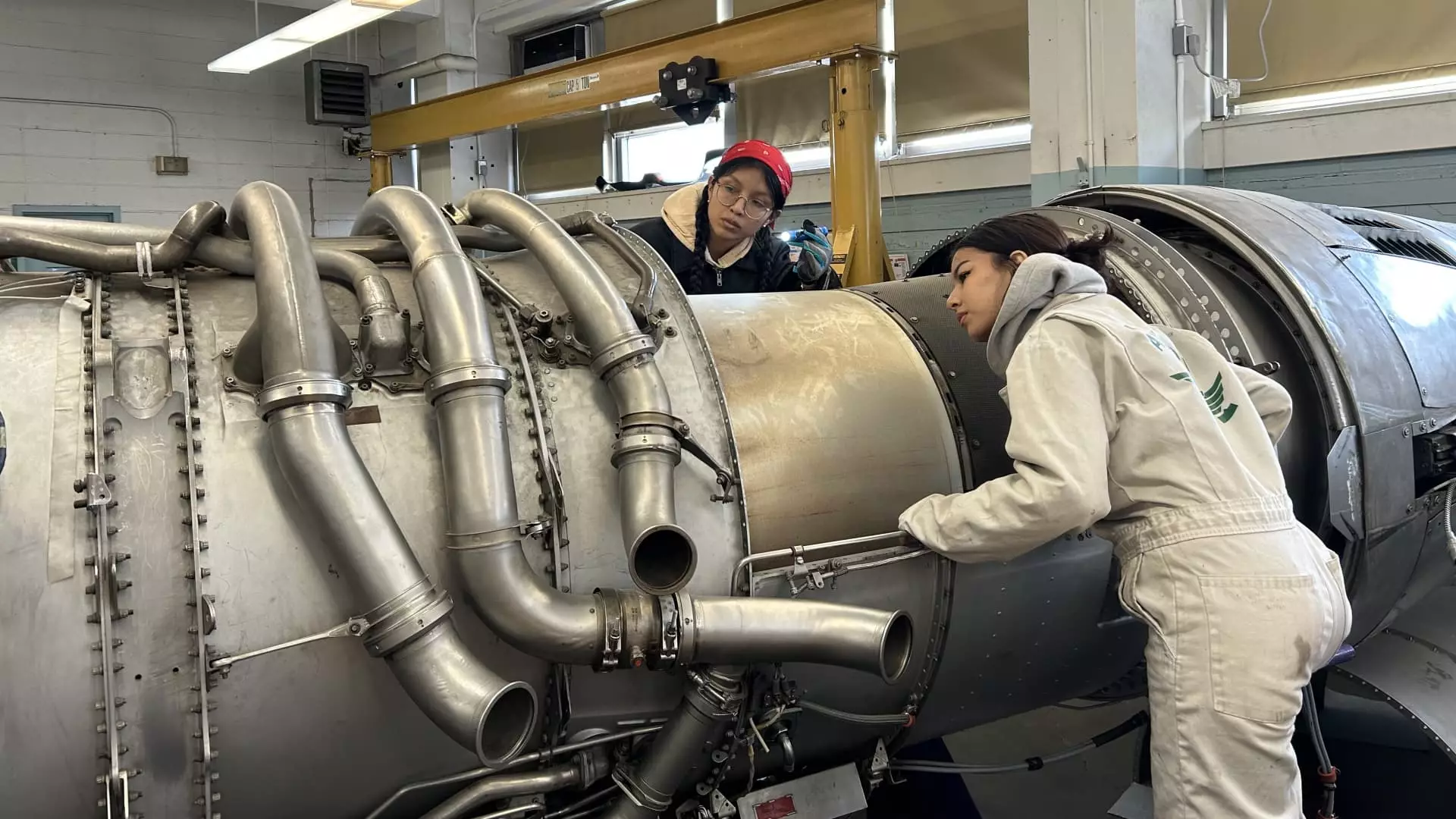There was a time when manufacturing jobs in the United States were synonymous with prosperity, stability, and opportunity. Today, however, the narrative has shifted dramatically. President Donald Trump’s emphasis on resurrecting these jobs reflects not only a political strategy but also an urgent cry to salvage what remains of American manufacturing strength—particularly within the aviation industry. With the U.S. poised to face a staggering shortage of 25,000 aircraft technicians by the year 2028, the time to act is now. The current situation is dire, and yet, it offers a unique opportunity to reshape the future of a critical sector through innovative thinking and robust investment.
The Aging Workforce Dilemma
The alarming fact that the average age of certified aircraft mechanics hovers around 54 years serves as a glaring warning sign. The reality is stark: nearly 40% of these skilled workers are over the age of 60. As a generation of experienced technicians approaches retirement, a massive gap looms large over the industry. It’s no wonder industry leaders like David Seymour of American Airlines express concern about the looming talent drain. The pandemic exacerbated this issue, forcing companies to make tough choices that strengthened their short-term financial outlooks but crippled their long-term workforce viability. As companies like GE Aerospace scramble to hire, the question arises: how do we appeal to the next generation of skilled workers who have tangible alternatives in the tech-driven economy?
Reimagining Career Pathways for the Young
Several innovative approaches are emerging to attract younger talent into the aviation sector. Initiatives like apprenticeship programs at educational institutions such as Aviation High School in Queens offer promising pathways for students eager to enter the workforce. With the lure of earning Federal Aviation Administration (FAA) licenses while still in high school, programs like these present a compelling alternative to the traditional college route.
This is a quintessential example of how industries must evolve to attract fresh talent, particularly in high-demand fields that require specialized skills. Students like Sam Mucciardi exemplify this shift in mindset, choosing to immerse themselves in hands-on training rather than chase generic four-year degrees. By recognizing the value of practical, skilled jobs in aviation, we can cultivate a new generation of technicians ready to step into roles that are pivotal for our national competitiveness.
The Importance of Competitive Compensation
Despite the technological advancements and fresh opportunities, the industry still struggles with competitive compensation. The median income for aircraft technicians stands at $79,140 a year, markedly higher than many other sectors, but is it enough? Industry advocates assert that the wages must increase further to reflect the growing demand for skilled workers, especially given that many technicians are still grappling with the financial repercussions of prolonged underpayment. As Sarah MacLeod, executive director of the Aeronautical Repair Station Association, cogently points out, if we fail to elevate our compensation structures, we risk not just the future of the aviation sector but broader economic stability at large.
Moreover, as Gordon Hanson from Harvard University aptly notes, manufacturing jobs are often challenging to fill due to geographical immobility. If we want to attract workers from diverse regions and backgrounds, we will have to address wage disparities and offer attractive packages that include healthcare, job security, and favorable working conditions.
Manufacturing: A Symbol of Resilience and Opportunity
The impending workforce shortages in not only aircraft maintenance but also air traffic control raise critical concerns around industry safety and operational efficiency. The challenges faced encompass not merely aviation jobs but touch on broader themes of economic autonomy and national pride. Manufacturing is more than just a percentage of U.S. employment; it represents a symbolic bulwark against economic insecurity and a beacon of innovation.
The spirit of American manufacturing must adapt; engaging students early through partnerships with junior high schools can inspire interest in high-tech manufacturing from a young age. As indicated by GE’s Meisner, the industry is now home to advanced machinery and cutting-edge technologies that stand in stark contrast to the outdated perceptions tied to ‘traditional’ manufacturing jobs.
Embracing the Future of Aerospace Talent
The aviation industry is at a crucial juncture; it represents a convergence of opportunity and challenge. As we stand on the brink of massive workforce shortages that threaten to undermine our competitiveness, we must refocus our energies. The vision must not only involve attracting young talent but also teaching them that a career in aerospace and manufacturing holds intrinsic value and satisfaction—qualities that go beyond mere financial reward.
The industry needs more than just bodies to fill jobs; it needs enthusiastic young professionals who are excited about technology and innovation. By investing in education, rethinking compensation models, and addressing geographic barriers, we can revitalize American aviation and manufacturing—transforming them into thriving sectors that not only survive but flourish in an increasingly competitive global landscape.

